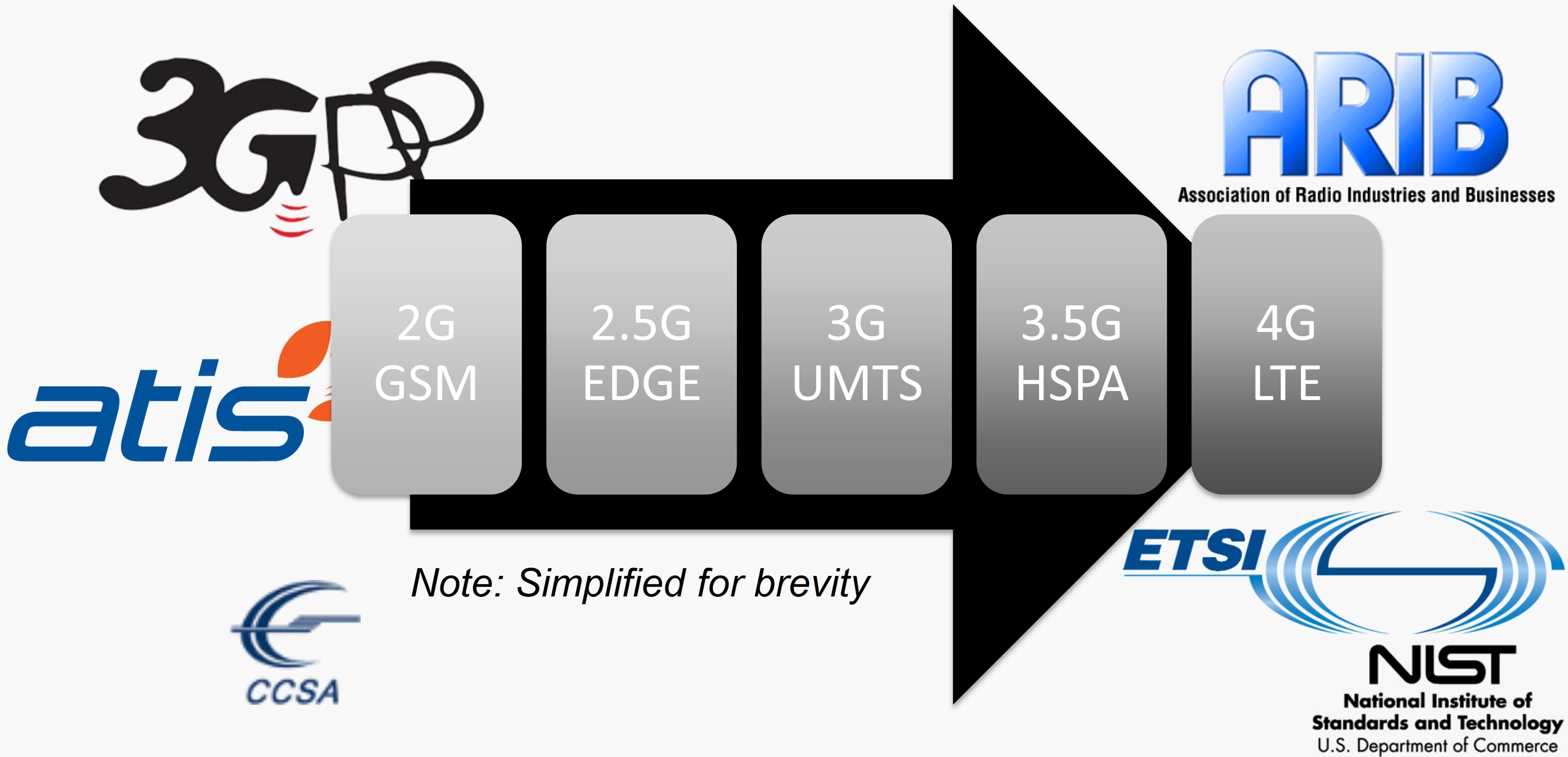On the (In)Security of 4G - Part II: The short History of Mobile Telecommunications Systems
Table of Contents
Mobile Phone Networks
Before delving into 4G based systems, I would like to begin in this post with a bit of history and responsible organizations.
Background
Since 1998 the 3rd Generation Partnership Project (3GPP) , covering a number of standards organizations, develop mobile telecommunications protocols. Under their supervision several technologies were developed:
- Global System for Mobile Communications (GSM) and related 2G and 2.5G standards most notable General Packet Radio Service (GPRS) and Enhanced Data Rates for GSM Evolution (EDGE)
- Universal Mobile Telecommunications System (UMTS) and related 3G standards, most notably High Speed Packet Access (HSPA) and HSPA+
- Long Term Evolution (LTE) and related 4G standards, including LTE Advanced and LTE Advanced Pro
- 5G New Radio (NR) and related 5G standards
Mobile Phone Network Generations
Here I want to list the most important background information about the Mobile Phone Network Generations. Yes this is a wikipedia source but I guess this is sufficient to get a broad understanding of each term involved in this wireless communications systems ecosystem.
- 0G - Pre wireless telephone technology era before 1979
- 1G - First generation of wireless telephone technology
- Introduced 1979
- Using analogue radio signals
- 2G - Second generation of wireless telephone technology
- 2G cellular telecom network launched on GSM standard in 1991
- 2G networks digital
- 2G introduced data services
- 2.5G - Introducing packet switched domain
- Datalink and communication system for 2.5G: GPRS
- 2.75G - GPRS to EDGE evolution
- 3G - Third generation of wireless telephone technology
- Introduced 1998
- Technologies: UMTS and CDMA2000
- Providing at least 144 kbit/s
- 3.5G - Providing better performance than 3G systems
- High Speed Downlink packet Access (HSDPA) (allowing UMTS based networks higher data speed and capacity)
- 3.75G - Second phase of HSPA
- HSPA+ or HSPAP
- 3.95G - Long Term Evolution (LTE)
- Formally LTE did not meet 4G requirements as specified in 3GPP Release 8
- Marketed as 4G LTE but:
- LTE began as 3.95G
- First networks 2008
- 4G - Fourth generation of wireless telephone technology
- Specified in 3GPP Release 8
- Further developed in 3GPP Release 9
- First networks as of 2009
- 4.5G - This step provides better performance than 4G
- Technology: LTE Advanced standardized in 3GPP Release 10
- Further developed in 3GPP Release 11 and 12
- 4.9G - This step closes the gap to 5G
- Technology: LTE Advanced Pro
- Standards: 3GPP Release 13> and 14
- 5G - Fifth generation of wireless telephone technology
- Specified in 3GPP Release 15, 16 and 17.
- 5G NR - 5G New Radio
- First networks as of 2019
- Data Rates: 50 Mbit/s to several Gbit/s
- Latencies: Currently (2020-06) 8-12ms; Foreseen 1-4ms
Overall we note, approximately every ten years there is a new generation of mobile wireless telecommunications systems. Since 2G introducing digital data services, capacities and data rates have dramatically increased while latency decreased. Since 2G - GSM - security was supposed to be engineered into the system.

3GPP Releases
When browsing through the documents on the 3gpp homepage, I realized it is very complicated to locate the specifics of one technology and locate the correlated specification to it.
So for LTE Security, we require release 8 and 9. However, as it appears, every release ,documents from previous releases are revised and possibly updated. So where is the most up-to-date specification?
Furthermore this page here about specification numbering helps identifying the correct document. For example Security Aspects are covered in the 33 series.
The first document I found was 33.102: The "3G Security Architecture" and also its most current version V15.1.0 (2018-12) from release 15.
The next important document describing large parts of the 4G security is 33.401: "3GPP System Architecture Evolution (SAE); Security Architecture" in its latest version V15.11.0 (2020-03).
Finally for the 5G system, the most important document is 33.501: "Security architecture and procedures for 5G system" in its latest version V16.2.0 (2020-03).
Apart from these “most important overall security architecture details” documents, there are 165 documents on the 33 serries.
In general the 36 series is all about LTE and its many features. Overall there are 297 publications ont this page about LTE so lots and lots to read.
Summary on (2-5)G
Every 10 years there is a new standard for commercial mobile phone communication systems with an increase in data rate, reduce in latency, reduce in cell sizes, increase in frequency and currently we are looking at 5G, which is currently (as of 2020) being rolled out worldwide. XG (2G, 3G, 4G, 5G) standards are developed by 3GPP since 1991 and since the 2G standard, the underlying network technology is digital. As we have established an overview of all developed technologies and the 3GPP consortium, let’s dive deeper into 4G in the next article.
Here you can read Part I and Part III.
See you soon. :)
Abbreviations
- 3rd Generation Partnership Project (3GPP)
- Enhanced Data Rates for GSM Evolution (EDGE)
- General Packet Radio Service (GPRS)
- Global System for Mobile Communications (GSM)
- High Speed Downlink packet Access (HSDPA)
- High Speed Packet Access (HSPA)
- Long Term Evolution (LTE)
- New Radio (NR)
- System Architecture Evolution (SAE)
- Universal Mobile Telecommunications System (UMTS)